Improve Your Hot Tub Use: Expert Jet Maintenance & Troubleshooting
October 25th, 2024
October 25th, 2024
A hot tub's allure often lies in its jets, transforming a simple bath into a rejuvenating retreat. I recall the first time I sank into one, the gentle pressure of the water kneading away the day's stress. Those moments of bliss are the creation of well-designed jets, yet not all are crafted equally. Understanding the nuances behind their design can significantly enhance your hot tub experience.
Jets are more than just streams of water; they are the heart of hydrotherapy. They vary widely, each offering unique therapeutic benefits. Some jets target specific muscle groups, while others provide a soothing, all-encompassing massage. It’s crucial to recognize how these differences can cater to personal preferences and needs. When choosing a hot tub, the arrangement and type of jets can make all the difference in achieving that perfect soak.
Moreover, maintenance is a key component in ensuring jets perform at their best. Regular cleaning and proper care prevent blockages and ensure longevity, much like caring for a beloved car. When jets are in top condition, they promise not only relaxation but also a powerful escape from daily life. In the following sections, this guide will explore how to choose, maintain, and enjoy hot tub jets, turning your personal spa into a haven of tranquility and wellness.
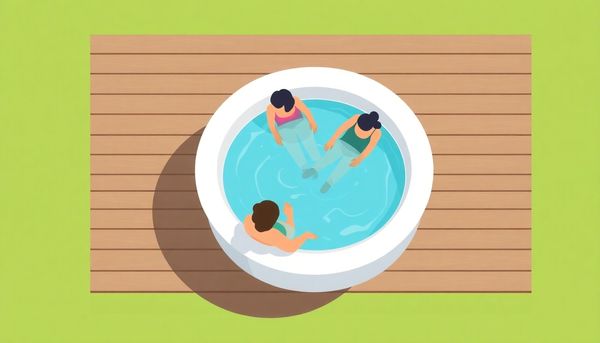
Understanding the mechanics of hot tub jets can transform your spa experience from simple soaking to a symphony of relaxation. Jets may seem like tiny components, yet they hold the secret to turning a calm pool of water into a bubbling oasis. Their primary role is to create a soothing massage effect, a feat achieved through the fascinating Venturi effect—a principle of fluid dynamics that cleverly mixes air and water.
Water is drawn into the jet and forced through a narrow passage, accelerating and reducing pressure, which invites surrounding air to join the dance. This blend of air and water is what gives hot tub jets their unique ability to both soothe and invigorate. Imagine sitting in your tub, feeling those bubbles gently massaging your muscles, and knowing it's all thanks to a clever bit of physics at work.
However, sometimes jets can face hiccups. Scale build-up or airlocks can disrupt their smooth operation. For instance, if you ever find your jets aren't as lively, it might be due to mineral deposits from hard water. Regular maintenance includes checking for these deposits and ensuring air isn't trapped in the system. My friend once shared how a simple cleaning restored her hot tub's jets after weeks of sputtering.
Keeping jets in peak condition allows them to provide the ultimate spa experience. Who knew such small devices could enhance relaxation to such a degree?
In the realm of hot tub engineering, the Venturi effect stands as a fascinating principle that transforms simple water flow into an invigorating spa experience. This phenomenon relies on the intricate dance between pressure and velocity, achieved through the uniquely designed jets in your hot tub. At the core of this marvel lies the hourglass-shaped pipe, where the magic unfolds. As water rushes through the narrowest part of the jet, its speed increases while the pressure drops, a delicate balance that sets the stage for what happens next.
A personal revelation struck me during a conversation with a friend who was puzzled by the seemingly effortless transformation of water into bubbly bliss. It turned out that the higher atmospheric pressure outside the jet eagerly forces air into the low-pressure water stream, creating the bubbly, soothing flow we all seek after a long day. This simple yet ingenious interaction between water and air is what gives hot tub jets their signature therapeutic touch.
Maintaining this delicate system is essential. Regular cleaning and inspections ensure that the jets continue to operate at peak efficiency. So next time you sink into those comforting bubbles, take a moment to appreciate the Venturi effect at work, quietly blending physics and relaxation right in your backyard oasis.
When your hot tub jets start acting up, it can feel like your personal oasis has hit a snag. These small but mighty components are vital for transforming your spa experience from a simple soak to a luxurious massage. When they falter, it’s a good idea to familiarize yourself with some common issues and solutions before reaching for the phone to call in the experts.
One frequent culprit behind non-responsive jets is hard water. If your jets seem stuck and refuse to adjust, calcium build-up might be the issue. Begin by testing the water for calcium hardness. Should the results confirm your suspicion, applying a descaler can often dissolve these mineral deposits. Persistent scaling may require draining the tub and scrubbing the jets to restore their mobility.
Another glitch hot tub owners encounter involves trapped air in the system, particularly after refilling. Air pockets can cause the pump to lock, diminishing jet pressure. Bleeding the pump—a process that involves slightly loosening the discharge pipe coupling to release air—can usually resolve this. Listen for a hissing sound; once expelled, tighten the coupling back into place.
Pulsating jets often indicate a different problem: either the water level is too low, or the filter needs cleaning. Ensure the water is at the proper level, and if that doesn’t solve the issue, inspect the filter for clogs. A simple clean or replacement might be all that's needed.
For those situations where a DIY fix isn’t viable, don't hesitate to call a professional. Taking care of your hot tub ensures many relaxing evenings ahead, without the worry of unexpected breakdowns.
Calcium build-up in hot tub jets can sneak up on you like an uninvited guest. One day, your hot tub is a bubbling paradise, and the next, those jets are sluggish and unresponsive. The culprit? Often it's hard water, rich in calcium and magnesium, leaving a stubborn scale behind. Over time, this build-up can severely restrict water flow, turning your soothing massage into a mere trickle.
To prevent this problem, regularly test your water’s calcium hardness. Aim for a balance between 150 and 400 parts per million (ppm). If your levels are higher, consider using a water softener or a descaling agent specifically designed for spas. These products bind to calcium ions, preventing them from settling on your jets and plumbing.
Another handy tip is to employ a hose filter when refilling your tub, especially if your local water supply is naturally hard. This simple step can significantly reduce incoming minerals. Regular maintenance is key, so make it a routine to drain and clean your hot tub every three to four months. Scrubbing the jets with a soft brush will help remove any lingering deposits before they turn into a more serious problem.
By taking these proactive measures, you can enjoy uninterrupted, bubbly bliss, keeping your hot tub a luxurious retreat rather than a maintenance headache.
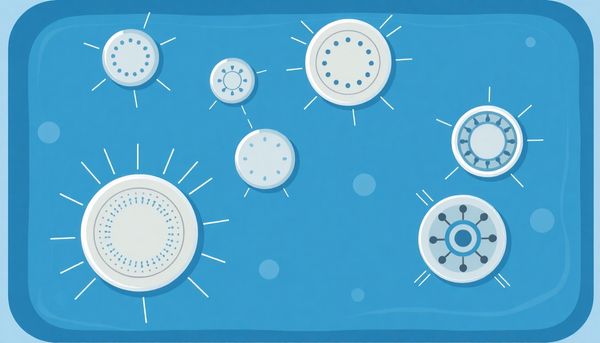
In the world of hot tubs, jets are the unsung heroes, tirelessly churning water to create that perfect spa experience. However, like any hero, they sometimes face obstacles. When your hot tub jets start acting up, it's best to tackle the issue head-on before making a costly call to a repair professional.
Imagine slipping into your hot tub, eagerly anticipating that soothing water massage, but instead, finding the jets stubbornly static. Often, the culprit is hard water. High calcium content can lead to scale buildup, effectively freezing your jets in place. To combat this, first test your water's calcium levels. If they're high, a descaler might work wonders. For more stubborn cases, drain the tub and scrub those jets clean. A simple fix, but one that can save you a lot of headaches down the line.
Sometimes, the issue isn't mineral deposits but air trapped in the plumbing lines. This scenario often arises after draining and refilling your tub. Air pockets can prevent the pump from circulating water, leading to a weak jet stream. Bleeding the air from the pump—by gently loosening the discharge pipe coupling—usually restores normal function. Listen for the comforting hiss as air escapes, followed by a rush of water.
Pulsating jets might suggest low water levels or a clogged filter. Ensuring the tub is filled to the right level and cleaning or replacing the filter can often remedy this. If blockages or pump issues persist, it might be time to consult a professional, but not before you've given these troubleshooting tips a try.
In the dance of water and air, your jets are the choreographers. Keep them nimble, and your hot tub will offer endless hours of relaxation.
To keep a hot tub bubbling blissfully, diagnosing water-flow problems is a crucial skill. A smooth flow through the jets is what transforms a simple soak into a relaxing, spa-like experience. When hot tub jets falter, they often point to underlying issues that, if ignored, can escalate into major headaches.
Begin by assessing the water pressure. Jets that produce a feeble stream might be suffering from insufficient water levels. A quick check of the water height can often solve this; simply ensure the tub is filled to the manufacturer’s recommended level. If air infiltrates the system due to low water, it can cause the jets to splutter, reducing their soothing consistency.
Another potential culprit is a clogged filter. Over time, filters can accumulate debris, obstructing water flow. Regular cleaning or replacement of the filter not only enhances the jet performance but prolongs the life of your hot tub. Consider this akin to changing the oil in a car—routine maintenance keeps everything running smoothly.
Moreover, mineral deposits from hard water can lead to stubborn scaling. This scale can gradually impede water flow within pipes and jets. Utilizing a descaler, or installing a water softening system, can help mitigate this issue. For more extensive blockages or persistent problems, examining the pump and plumbing for clogs might be necessary.
Ultimately, understanding these common issues and keeping an eye on the telltale signs allows you to enjoy uninterrupted bubbling bliss. With a little attention and care, your hot tub will continue to provide that perfect blend of relaxation and rejuvenation.
Understanding the maintenance of your hot tub jets is crucial to enjoying a relaxing soak. A persistent adversary in this battle is calcium build-up, a silent saboteur of relaxation. Ever noticed that your jets seem less enthusiastic about delivering those bubbly massages? The culprit may be calcium scaling, a common issue in regions with hard water. These white, crusty deposits can restrict water flow, making your jets less efficient and potentially damaging the entire system over time.
To combat this, regular water testing is essential. Using test strips or a digital tester, check the calcium hardness levels in your spa water. The ideal range hovers between 150 to 250 ppm. If your measurements exceed this range, consider employing a descaler. This product binds to calcium ions, preventing them from forming scale.
Moreover, when refilling your tub, using a hose filter can drastically reduce mineral content, preventing future build-up. It acts as a first line of defense against hard water. For those who prefer a more hands-on approach, draining and scrubbing the tub periodically keeps the surfaces pristine and the jets free of obstruction. These simple steps ensure your spa remains a sanctuary of relaxation rather than a source of frustration.
In the end, the effort you put into preventing calcium build-up rewards you with a hot tub that performs flawlessly, offering the soothing experience you originally sought.
Jets bring life to a hot tub, transforming it from a large, warm pool into a bubbling oasis of relaxation. Yet, these little marvels can fall silent when air finds its way into the lines. Such airlocks might quietly sabotage the gentle massage you crave, but they’re often easily resolved without a pricey technician.
Air can slip into the plumbing lines, especially after a fresh refill of your tub. This sneaky intruder may halt the water flow, making even the most adventurous jets feel lackluster. Bleeding the air from the lines is your first line of defense. To do this, find the discharge pipe on the pump, and with a gentle twist, loosen the coupling enough to let the air escape. As the pump comes to life, a hissing sound signals the air’s departure, replaced by a robust gush of water. Once the air is gone, a simple twist tightens the coupling, restoring your jets to their full glory.
Regular maintenance is also a crucial ally. Keeping the jets and plumbing clean will prevent buildup that can obstruct airflow. A little elbow grease now saves headaches later. In this way, your hot tub remains a haven of relaxation rather than a source of frustration. Remember, a clear path for water means uninterrupted leisure for you.
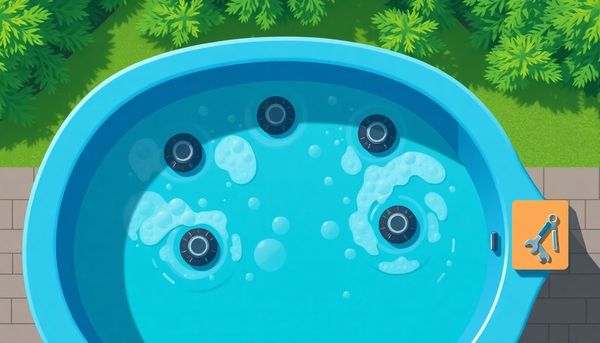
When it comes to hot tub maintenance, a clean set of jets can be the key to sustaining that luxurious, bubbly experience. Jets are the heart of your spa, orchestrating a soothing symphony of water and air. Neglecting them might turn your therapeutic retreat into a lackluster soak. I remember once, my own hot tub jets were underperforming, leaving me puzzled and disappointed. A quick inspection revealed the culprit: a stubborn layer of grime that had accumulated over time.
Start by powering down your spa. Safety first! Then, remove the jets carefully. Most jets unscrew easily, but if they resist, a gentle wiggle usually does the trick. Once free, soak them in a mixture of warm water and mild detergent. Let them marinate for a few hours to loosen any clinging debris. While they soak, use a soft brush to scrub away any visible deposits—calcium and oils are common offenders.
Rinse thoroughly, ensuring no soap residue remains. Before reattaching the jets, take a peek inside the empty ports. Use a pipe cleaner to remove any residual gunk hiding in the crevices. Preventive maintenance can save you a world of hassle. Consider a monthly cleaning schedule, making use of water line cleaners to combat future build-up. This routine not only extends the lifespan of your jets but also ensures each soak is as invigorating as the last.
Jets, those small yet vital components of your hot tub, can sometimes throw a wrench in your relaxation plans. When they malfunction, it may seem like your at-home oasis is slipping away. Let's explore how to troubleshoot these little whirlpool wonders.
Encountering an unresponsive jet often points to a hard water issue. Hard water, laden with calcium and magnesium, can create a stubborn buildup called scale. This can cause the jets to become immobile, locked tight with deposits. To tackle this, first test your water's hardness. If it's the culprit, a descaler might help dissolve the buildup. Failing that, a more hands-on approach involving a thorough scrub of the jets post-draining could be necessary. For prevention, think about using a hose filter whenever you refill the tub, particularly if your water source is notoriously hard.
Another common hiccup is that stubborn air trapped in the plumbing. It can stop water from flowing smoothly, reducing the jets' power to a mere trickle. To resolve this, locate the pump’s discharge pipe and carefully loosen its coupling to release the air. Listen for that satisfying hiss—your cue that things are back on track.
Sometimes, jet pulsation signals a different issue. An insufficient water level or a clogged filter might be your suspects. Ensure your hot tub is filled as per the manufacturer’s guidelines, and give your filter a good clean, or replace it if it’s past its prime.
Of course, some problems require that expert touch. When in doubt, calling a professional can save you time and avoid further headaches. After all, your hot tub should be a sanctuary of relaxation, not a source of stress.
When it comes to savoring the full potential of your hot tub, preventing scale build-up is as vital as maintaining water chemistry. You might not notice it at first, but over time, those tiny particles of calcium and magnesium can conspire to create a stubborn layer of scale that affects your jacuzzi’s performance. I recall a friend who overlooked this issue, only to find his spa jets sputtering like a car running out of gas.
To keep your hot tub in top form, regular water testing is your first line of defense. It’s crucial to monitor calcium hardness levels; maintaining them in the recommended range keeps the water balanced and prevents scale formation. If you find the levels creeping up, consider using a scale inhibitor. These treatments bind with calcium ions, preventing them from settling and hardening on your spa’s surfaces.
Moreover, employing a hose filter when refilling your tub can dramatically reduce the introduction of excess calcium and magnesium. This simple tool acts as a gatekeeper, filtering out minerals before they have a chance to wreak havoc. Regular cleaning routines also go a long way. Scrubbing surfaces and jets periodically ensures that any potential scale doesn’t get the chance to settle down.
Incorporating these strategies into your hot tub maintenance routine not only prolongs the life of your equipment but ensures that every soak remains as blissful and bubble-filled as intended.
Warm water envelops you, jets skillfully massaging your muscles—it's the perfect way to unwind. But to maintain this luxurious experience, ensuring optimal water flow within your hot tub is crucial. Like the heart of this aquatic haven, the circulation system must be kept in peak condition to sustain that soothing jet action.
Begin with vigilance over your water level. A hot tub draws its power from the right amount of water. Too low, and air sneaks into the system, disrupting the flow. This not only affects the pressure but can also lead to the dreaded pulsating jets. Regularly top up your tub to the manufacturer's recommended level to avoid such hiccups.
Next, pay attention to your filters. Dirt and debris can accumulate quickly, hindering the jet's ability to push water effectively. Cleaning or replacing filters routinely will help prevent clogs and ensure a steady, soothing stream. Think of it as a spa day for your spa—necessary and rejuvenating.
Scale buildup poses another threat, particularly in areas with hard water. The calcium locks onto surfaces and internal components, restricting water flow. Using a water softener or descaler can prevent this, keeping your jets free and clear.
Finally, if your jets are still not performing, check for trapped air or blockages. A little maintenance now can save a lot of trouble later. With these simple steps, you can ensure your hot tub continues to be a sanctuary of blissful relaxation.
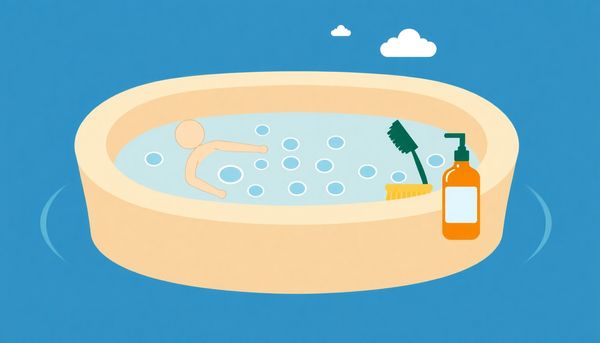
In the world of hot tubs, scale buildup can be one of your greatest foes. Scale, primarily composed of calcium carbonate, sneaks into your spa’s system, slowly accumulating until it causes problems you can't ignore. Ensuring your hot tub jets remain free of this mineral menace not only keeps them functioning smoothly but also extends the life of your spa.
To start, regular water testing is your best ally. Checking the calcium hardness levels in your hot tub water should become as routine as your morning coffee. If you find that levels are creeping up, consider using a water softener or a sequestering agent—a chemical that binds to calcium particles, preventing them from forming stubborn deposits.
Another proactive measure involves the use of a pre-filter when filling your hot tub. This simple tool attaches to your hose and filters out calcium and other minerals before they even enter your spa. It’s an upfront investment that pays dividends in maintenance ease.
Regular cleaning plays an equally vital role. Periodically, give your hot tub a deep clean—drain, scrub, and refill. During this process, ensure you pay particular attention to the jets, as their intricate designs can trap minerals. A toothbrush or a dedicated jet cleaning tool can help dislodge any buildup efficiently.
Don’t let hard water be the boss of your spa experience. With routine care and a few preventative steps, your hot tub jets can stay as pristine and powerful as the day you installed them.
Testing the water for hardness might not sound like the most thrilling task, but it's a crucial step in ensuring that your hot tub jets operate smoothly. One quiet evening, I noticed my own spa jets were stubbornly refusing to swirl the water with their usual gusto. A quick test revealed the culprit: hard water. The calcium deposits had been building a little fortress inside the jets, blocking their movement.
Various kits are available for checking calcium levels, but my personal favorite involves a simple strip test. Dip it in the water, wait a few seconds, and compare the colors with the chart provided. If the calcium concentration is high, steps must be taken to soften the water. A water softener or a specially-designed descaler can be your best allies here, making sure your jets don't end up feeling like they're swimming through a bowl of oatmeal.
If you suspect your water source favors hardness, consider using a hose filter when refilling the tub. This can prevent new build-ups, sparing you future headaches. Remember, prevention is worth a pound of cure. Consistent water checks and maintenance ensure your hot tub remains a haven of relaxation rather than becoming a battleground of stubborn minerals. After all, in the world of hot tubbing, it's the little things that often make the biggest splash.
A hot tub's jets are the unsung heroes of relaxation, transforming stagnant water into a therapeutic oasis. Many of us overlook the importance of keeping them spick and span, but neglecting their maintenance can leave you with a lukewarm tub of disappointment. A friend once shared how her jets lost their vigor, turning her spa time into a frustrating experience. Turns out, the culprit was a cocktail of grime and minerals that had settled over time.
To keep your hot tub jets in top form, it’s crucial to regularly clean and scrub them. Start by turning off the power to avoid any mishaps. Remove the jets, if possible, following your hot tub’s manual. A simple soak in a vinegar solution can work wonders, breaking down mineral deposits and any lurking residues. For those tougher spots, an old toothbrush can be your best ally, scrubbing away stubborn grime with ease.
Using a filter on your water source when filling the tub is another savvy move. It helps reduce mineral buildup, ensuring your jets stay free-flowing and efficient. And don't forget the pipes! Running a pipe cleaner through the system occasionally can help maintain the overall health of your hot tub.
Ultimately, a little elbow grease in maintaining your jets means endless hours of bubbly bliss. So, next time you sink into those soothing waters, give a nod to your clean and efficient jets. They’re working hard to keep your spa time as delightful as ever.
In the realm of hot tub maintenance, few tasks are as overlooked yet crucial as bleeding air from the pump. This seemingly minor procedure can be a game-changer in revitalizing your spa experience. Once, while wrestling with my own hot tub's stubborn jets, I discovered the transformative power of this simple step.
Air can sneak into the plumbing lines when you drain and refill your tub, leading to a frustrating standstill in water flow. The pump, starved of water, falters in its duty to propel those soothing jets. Addressing this issue begins with locating the pump's discharge pipe. Carefully loosen the coupling, but remember not to remove it entirely – the pressure can make it challenging to reattach.
As you power on the pump, keep an ear out for the unmistakable hiss of air escaping. This sound signals that the trapped air is on its way out. Soon after, you should see a robust column of water gushing, a sign that your jets are ready to perform once more. With a quick tightening of the coupling, your task is complete.
Regularly cleaning your hot tub's plumbing and jets further ensures smooth operation, safeguarding against potential buildup that might impede airflow. By mastering this straightforward technique, you're not just maintaining your spa; you're preserving a sanctuary of relaxation for countless evenings to come.

When hot tub jets become uncooperative, the culprit is often an airlock. This issue arises after draining and refilling your spa, when air sneaks into the plumbing and gets trapped in the pump. The result? Your soothing jets turn into a gentle trickle, or worse, a stubborn silence.
Addressing this problem requires a bit of hands-on action. Begin by locating the pump, usually nestled discreetly beneath the hot tub’s shell. Next, find the discharge pipe, and gently loosen its coupling. Resist the urge to remove it completely; you’re aiming to release air, not create a water geyser.
Once loosened, power up the pump. You should detect a distinct hissing as the trapped air escapes. With the air evacuated, the water should resume its vigorous flow, a sure sign that your jets are ready to dazzle once more. Secure the coupling firmly, and your job is done.
Regular cleaning prevents future airlocks by keeping the system clear of debris that might hinder water flow. Use a gentle cleanser to maintain the jets and pipes, ensuring they remain in top condition. Like a well-oiled machine, your hot tub thrives on consistent care.
So next time an airlock threatens your bubble paradise, you’ll know just how to coax your jets back to life. Happy soaking, and remember: a little maintenance goes a long way in preserving those precious moments of relaxation.
Jets are the heartbeat of your hot tub, transforming it from a simple warm bath into a rejuvenating experience. But what happens when that soothing stream of bubbles suddenly stops? Before you reach for the phone to call a repair technician, there are a few things you might want to try yourself.
Imagine settling into your hot tub, only to find the jets are unresponsive. A common culprit is mineral build-up, especially in areas with hard water. Hard water deposits calcium and magnesium in your jets, leading to their unwillingness to rotate or function smoothly. Testing your water for hardness is a smart first step. If you're met with high calcium levels, a descaler might just be your new best friend. However, if the jets remain stubborn, it may be time for a more thorough approach: drain the tub and scrub those jets clean.
Another hiccup might occur after draining and refilling your tub. Sometimes, air gets trapped in the plumbing, causing a pressure drop and leaving your jets gasping rather than gushing. To remedy this, look at the pump's discharge pipe. Loosening the coupling just enough to release trapped air, you should hear a satisfying hiss. Tighten it back once water flows steadily, and your jets should be back to their bubbly best.
Persistent pulsations instead of a steady jet stream could be due to water level issues or a clogged filter. Ensure your hot tub is filled to the recommended level, and give your filter some attention—clean or replace it as needed. If these simple checks don't resolve the problem, it might be time to reassess your strategy and consider professional help.
In essence, a bit of proactive troubleshooting can save you the hassle and expense of unnecessary repairs. So, keep your spa in top shape, and enjoy the therapeutic benefits it provides without interruption.
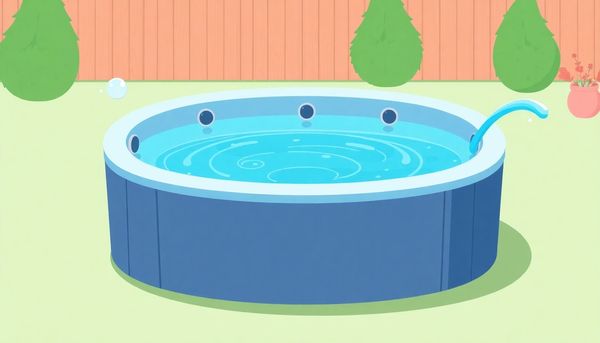
This article provided insights into maintaining your pool. Start your pool care journey today!
Want to become a pool maintenance expert? Our free Pool School course covers everything you need to know about pool care. From basic maintenance to advanced troubleshooting, you'll learn how to:
Join over 10,000 pool owners who have already transformed their pool care routine. Get started with our free Pool School course today!